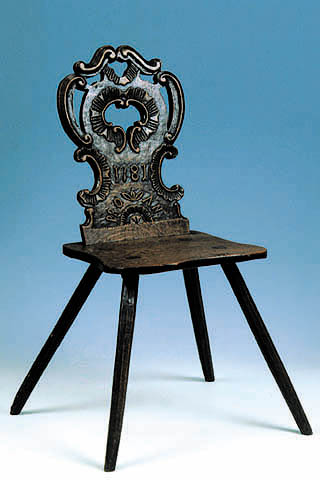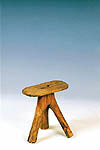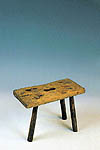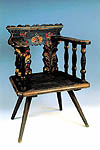 |
|
Ethnographical museology was given the first important
impulse by the collection for the ethnographical village of the Millenary
exhibition. We maintain 48 chairs from the objects gathered at that time,
out of which 44 are board-backed chairs. Some of them were made produced
by the guard of the Department of Ethnography of the National Museum of
Hungary in Torockó in 1893. Seventy-eight chairs have board backs out of
98 gathered until the beginning of World War I. The name „peasant chair”
can be found on a record dated 1913.
„They like applying a blue base on the chair and then
the ornament is painted on this in red, green, yellow, black and white
colours. In most cases only the back of the chair is painted like this,
and if the ornament also appears on the seat board, it will soon ware down,
this way verifying that it is not the place where painted ornament should
be applied. From the middle of the chair back’s bottom, emerging out from
the conventional flowerpot or vase, the scroll bearing leaves and flowers
begins to climb upwards, parting around the heart-shaped hole in the chair
back and finishing in tulips at the top of the chair back. On an asymmetric,
somehow slightly baroque-like chair from Vista, there is a red rose in
the middle and white roses on the two sides, and above these there is the
conventional flowerpot, out of which red and green leaves bend downwards…”
Malonyay Dezső: A magyar nép művészete. [Art of the Hungarian
People.] 1. kötet. A kalotaszegi magyar nép művészete. Budapest, 1907,
Franklin Társulat, 157. p.
.
For more information click on the pictures! |



